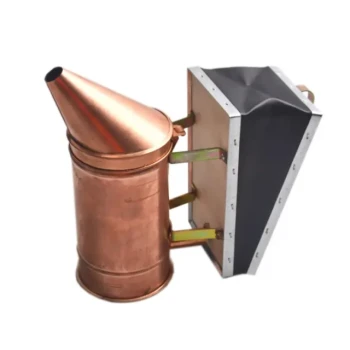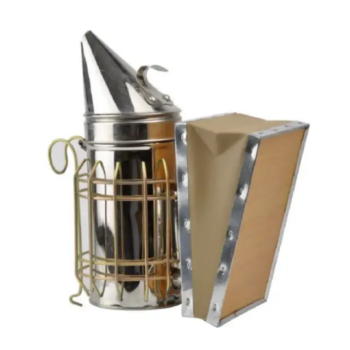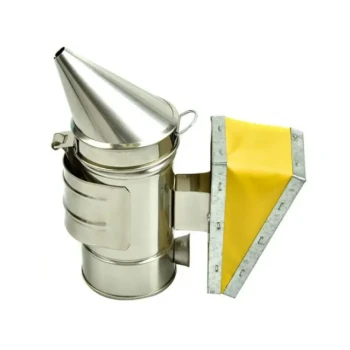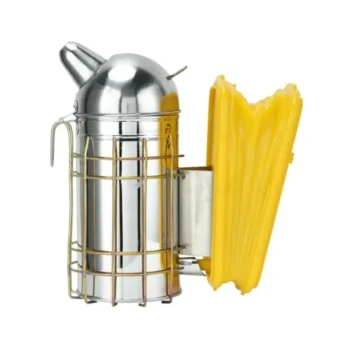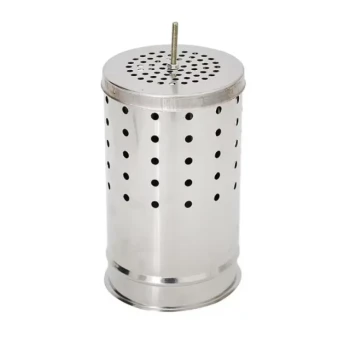While it is technically possible to work bees without smoke, especially with a very gentle colony, it is a significant risk and is not recommended for the vast majority of beekeepers. Forgoing smoke removes your primary tool for communication and control, dramatically increasing the likelihood of an inspection becoming unmanageable, resulting in excessive stings to you and potential danger to others nearby.
The core misunderstanding is that smoke is an aggressive tool. In reality, it is a communication method that gently interrupts the bees' primary alarm system, preventing a defensive chain reaction and allowing for a calm, safe inspection for both the beekeeper and the colony.
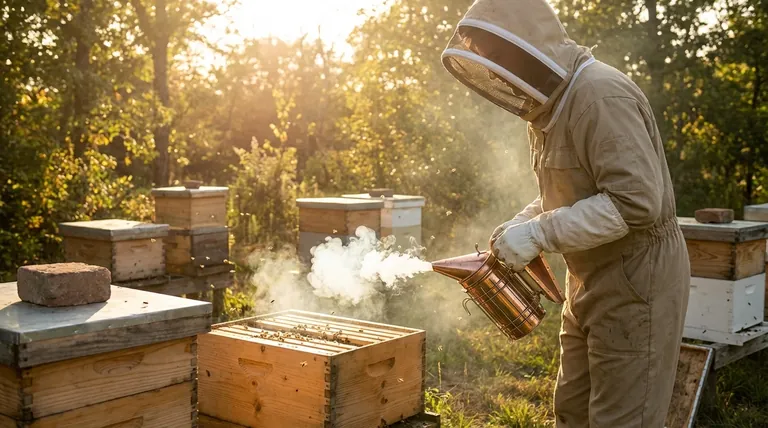
Why Smoke is the Standard Tool for Beekeepers
Smoke is not used to punish or harm bees. It leverages their natural instincts to create a safer, more controlled environment for hive inspections.
Interrupting the Alarm System
When a bee stings, it releases an alarm pheromone (isopentyl acetate) that smells like bananas. This pheromone signals "danger" to other guard bees, inciting them to sting the same target. Smoke effectively masks this pheromone, preventing a single sting from escalating into a mass defensive response.
Triggering a Natural Response
The presence of smoke triggers a deep-seated instinct in honeybees related to forest fires. Their immediate response is to prepare for a potential evacuation of their home. They begin to gorge on honey, and a bee with a full stomach is physically less able to flex its abdomen to sting and is generally more docile.
A Tool for Gentle Direction
A few gentle puffs of smoke can be used to move bees away from the edges of a hive box or off the top of a frame you need to lift. This allows you to work without crushing bees, which would otherwise trigger a defensive reaction.
The Risks of Working Without Smoke
Attempting smokeless beekeeping, especially without significant experience, introduces unnecessary dangers.
Increased Stings and Agitation
Without smoke to mask alarm pheromones, the first sting will quickly alert the rest of the colony. This can lead to a rapid and painful escalation of defensive behavior, making the experience stressful for you and the bees.
Unmanageable Inspections
A highly defensive and agitated colony makes a thorough and calm inspection nearly impossible. You will be rushed, unable to properly check for queen health, brood patterns, or signs of disease, defeating the purpose of the inspection.
Danger to Others
Once a colony is highly agitated, its defensive perimeter can expand significantly. This puts pets, neighbors, and anyone nearby at risk of being stung as the bees seek out threats far from the hive itself.
Understanding the Trade-offs and Common Pitfalls
Using smoke is a skill. Improper use can be ineffective or even counterproductive.
Using Too Much Smoke
Over-smoking a hive is a common mistake. Dousing the bees in excessive smoke can agitate them, disorient the colony, and drive the queen into hiding, making her difficult to find. The goal is calm communication, not brute force.
Using Hot, Poor-Quality Smoke
The ideal smoke is cool and white. Hot smoke, often produced from a poorly lit or managed smoker, can burn and harm the bees. Always ensure your smoker is burning properly before you approach a hive.
Misreading the Colony's Mood
Smoke is a tool, not a magic wand. Experienced beekeepers learn to read their bees. If a colony is particularly defensive on a given day due to weather or other factors, sometimes the wisest decision—even with smoke—is to close the hive and return another time.
How to Apply Smoke Correctly
Proper technique ensures smoke is a calming influence rather than an irritant.
The "Knock" at the Entrance
Before you open the hive, give one or two gentle puffs of smoke into the main entrance. This is like knocking on the door—it signals your presence and begins the process of masking any initial alarm pheromones from guard bees. Wait 30-60 seconds before proceeding.
A Gentle Application Under the Lid
After waiting, gently crack the outer and inner covers. Before removing them completely, puff a small amount of smoke across the top of the frames. This calms the bees at the top of the hive who are most likely to react to the disturbance.
Strategic Puffs During Inspection
As you work, pay attention to the bees' behavior. If you hear a rising "roar" in pitch or see bees starting to fly at you, it's time for another gentle waft of smoke across the top of the frames to calm them down again. Use just enough to keep them manageable.
Masking Stings
If you do get stung, immediately smoke the affected area on your suit or glove. This will mask the alarm pheromone released by the sting and prevent other bees from targeting the same spot.
Making the Right Choice for Your Goal
- If your primary focus is safety and predictable inspections: You should always use a smoker. It is the most reliable and effective tool for managing colony defensiveness.
- If your primary focus is minimizing disruption to the bees: Learn to use cool, white smoke sparingly and strategically. Proper technique is far less disruptive than an agitated colony's defensive response.
- If you are an advanced beekeeper with a known gentle colony: You might occasionally attempt a very brief, smokeless check, but you must always have a lit and readily available smoker in case the hive's mood changes unexpectedly.
Ultimately, using smoke correctly is a sign of a respectful beekeeper who understands how to communicate with their bees in a language they understand.
Summary Table:
| Aspect | With Smoke | Without Smoke |
|---|---|---|
| Colony Control | Calm, manageable bees | High risk of agitation |
| Sting Prevention | Masks alarm pheromones | Rapid defensive escalation |
| Inspection Quality | Thorough and safe | Rushed and stressful |
| Safety for Others | Low risk to neighbors/pets | Expanded defensive perimeter |
Ready to work your hives safely and efficiently?
At HONESTBEE, we supply commercial apiaries and beekeeping equipment distributors with the high-quality tools—including reliable smokers and fuel—needed for successful, safe hive management. Our wholesale-focused operations ensure you get the professional-grade equipment your business depends on.
Let's discuss your apiary's needs. Contact our expert team today!
Visual Guide
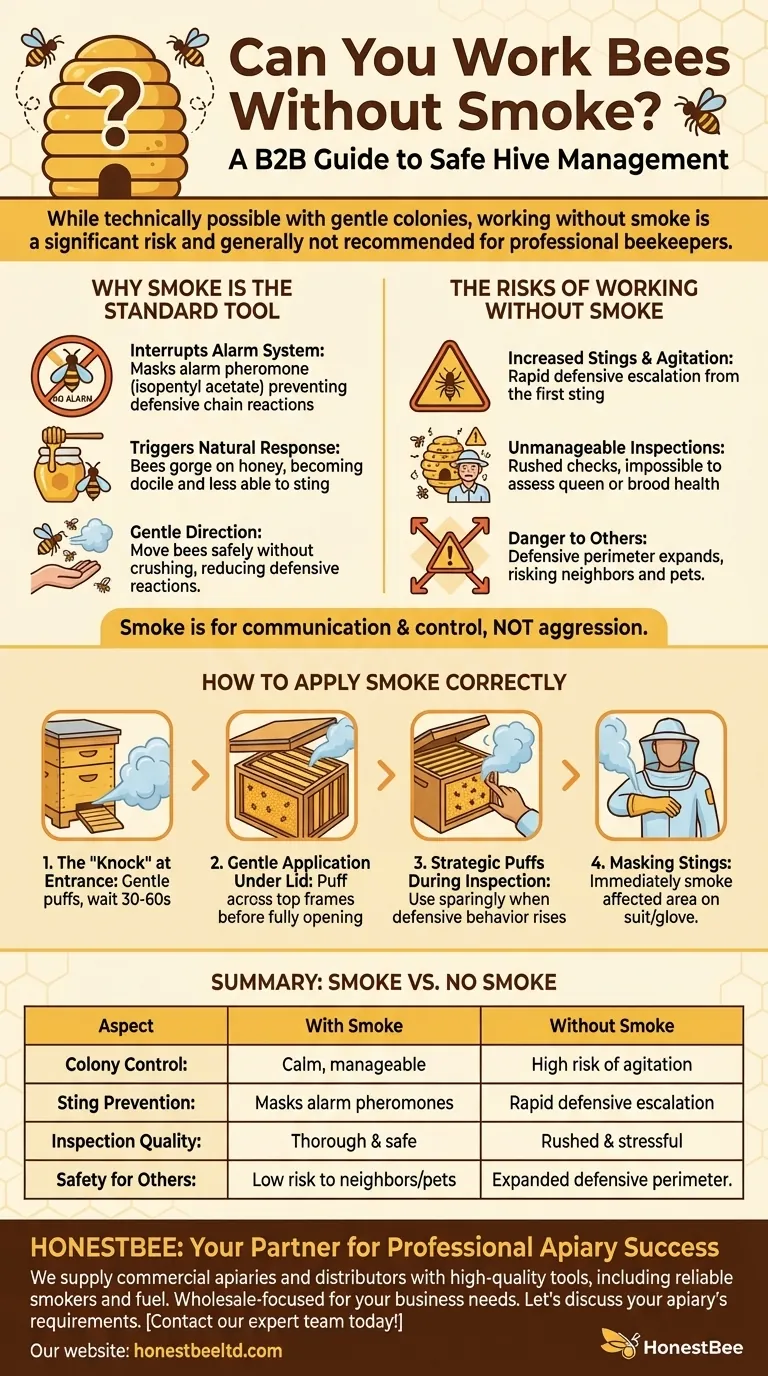
Related Products
- Premium Traditional Copper Bee Smoker with Bellows
- Stainless Steel Honey Bee Smoker Hive and Honeycomb Smoker for Beekeeping
- Stainless Steel Bee Hive Smoker Beekeeping Smoker for Wholesale
- European Stainless Steel Bee Smoker for Honey Bee Hive
- Electric Bee Smoker European Style Bee Hive Smoker for Beekeeping
People Also Ask
- What is the purpose of a bee smoker and how should it be used? A Guide to Calm, Safe Hive Inspections
- What is a Smoker and how is it used in beekeeping? The Essential Tool for Calm, Safe Hive Inspections
- How did early beekeepers use bee smokers? Master Ancient Bee Calming Techniques
- What are some alternatives to using smoke in beekeeping? A Guide to Gentle Hive Management
- What are the benefits of using smoke properly in beekeeping? Achieve Calm, Safe Hive Inspections
